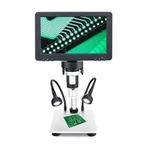The three different types of bubble levels' mechanisms of operation
Bubble levels are widely used in the precision machinery industry to measure the flatness, straightness and correctness of the installation position of the machine parts surface, and can also be used to measure the small inclination angle of the workpiece. There are three types of bubble levels: frame level, strip level and combined image level.
1. The working principle of the frame bubble level meter:
The frame-type bubble level is a square general-purpose angle measuring instrument that uses the principle of liquid flow and liquid level to directly display the slight inclination angle relative to the horizontal and vertical positions with the level bubble.
When looking for the level of the frame-type bubble level, it should be staggered by 90° for calibration, that is, the usual calibration of the X-axis and Y-axis. During the adjustment process, the water bubble should be in the middle position to meet the requirements. The spirit level also has a V-shaped groove on the side, which is used to measure the vertical surface, and the method is the same as above.
It should be noted that the level should be lightly placed on the surface to be tested when in use, and try not to collide, so as to avoid the displacement of the mechanical adjustment parts inside the level, which will cause inaccurate accuracy.
The accuracy of the frame-type bubble level is 0.02/1000mm, that is, 2C per meter. Each grid on the above scale is 2C, that is, every deviation of one grid means that one end is higher than 2C within one meter.
2. Working principle of strip bubble level meter:
It consists of two parts, the V-shaped bottom plane as the working plane and the level (commonly known as bubble) parallel to the working plane. The straightness of the working plane and the parallelism between the level and the working plane are well done. When the bottom plane of the spirit level is placed at an accurate horizontal position, the air bubble in the level is just at the middle position (that is, the horizontal position). On both sides of the engraved line at the two ends of the bubble in the glass tube of the vial is the zero line, there are not less than 8 scales engraved, and the interval between the engraved lines is 2mm. When there is a slight difference between the bottom plane of the level and the horizontal position, that is, when there is a difference between the two ends of the bottom plane of the level, the bubbles in the level will always move to one side of the level due to the effect of gravity, which is the level of the level. Principle of use. When the heights of the two ends are about the same, the bubbles will not move much.
The strip level is mainly used to test the straightness of the guide rails of various machine tools and other types of equipment and the horizontal and vertical positions of equipment installation. It can also be applied to the measurement of small angles and working surfaces with V-shaped grooves. It can also measure the installation parallelism of cylindrical workpieces, as well as the horizontal and vertical positions of the installation.
3. Working principle of composite image bubble level:
The combined image level uses a prism to magnify the gas and vapor in the level to increase the accuracy of the reading, and uses a set of transmission mechanisms such as a lever and a micro-moving screw to increase the sensitivity of the reading. Therefore, when the measured part is tilted by 0.01 mm/m, it can be read out in the combiner. (In the combined image level, the level mainly plays the role of pointing to zero.)






